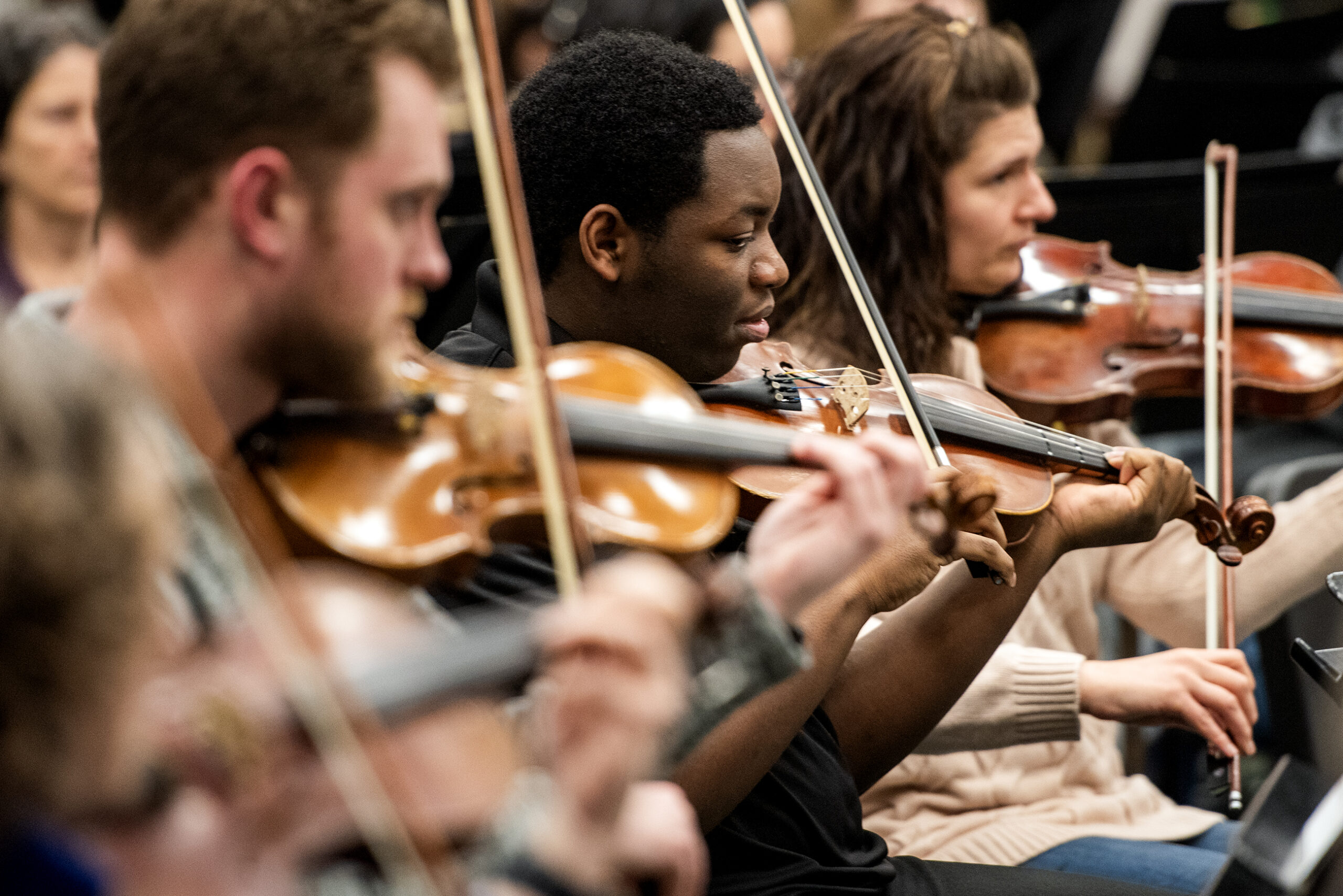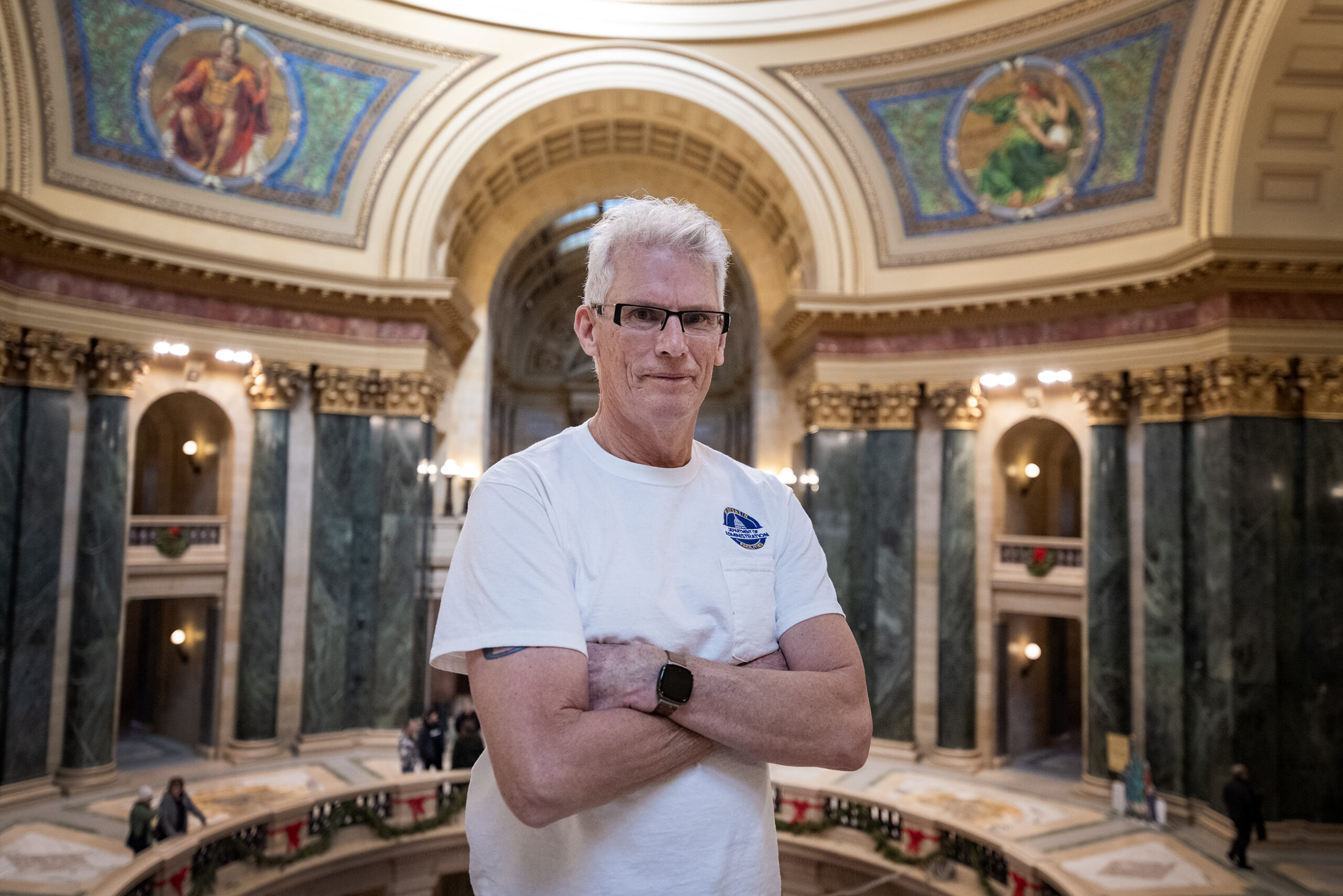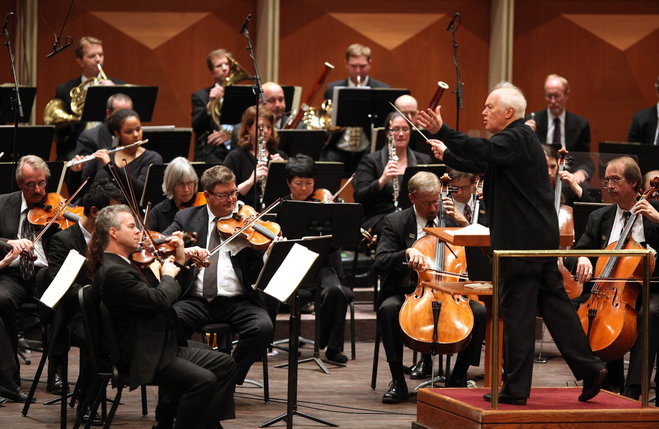As a young woman in her 30s, Sue Hulsether found herself recently divorced, living in a new city and looking for a social outlet.
At the invitation of a friend, Hulsether started going to contra dances, a type of folk dancing that originated in Europe in the 17th century and later became popular in New England and Appalachia. Hulsether describes it as “a cousin to square dancing” with Celtic music.
“The first dance I went to, I was hooked,” she said in a recent interview on WPR’s “Wisconsin Today.”
Stay informed on the latest news
Sign up for WPR’s email newsletter.
Hulsether spent the next five years regularly going to contra and square dances, which she said are “rooted in the social experience with others.” Over time, she was drawn to the idea of learning how to be a “caller,” the person who chooses the dances for the night, teaches people what to do and then calls out the instructions, often in a musical way.
“It’s like being a rapper, only you’re calling square dances,” she said.
Hulsether ultimately quit her job as a K-12 music teacher, moved to Viroqua in southwestern Wisconsin and decided to make a career out of dance calling.
For the past 22 years, this has involved a combination of teaching at schools as a visiting artist and calling dances for evening and weekend events like weddings, family reunions and festivals. Along the way, she picked up a nickname: Dancing Sue.
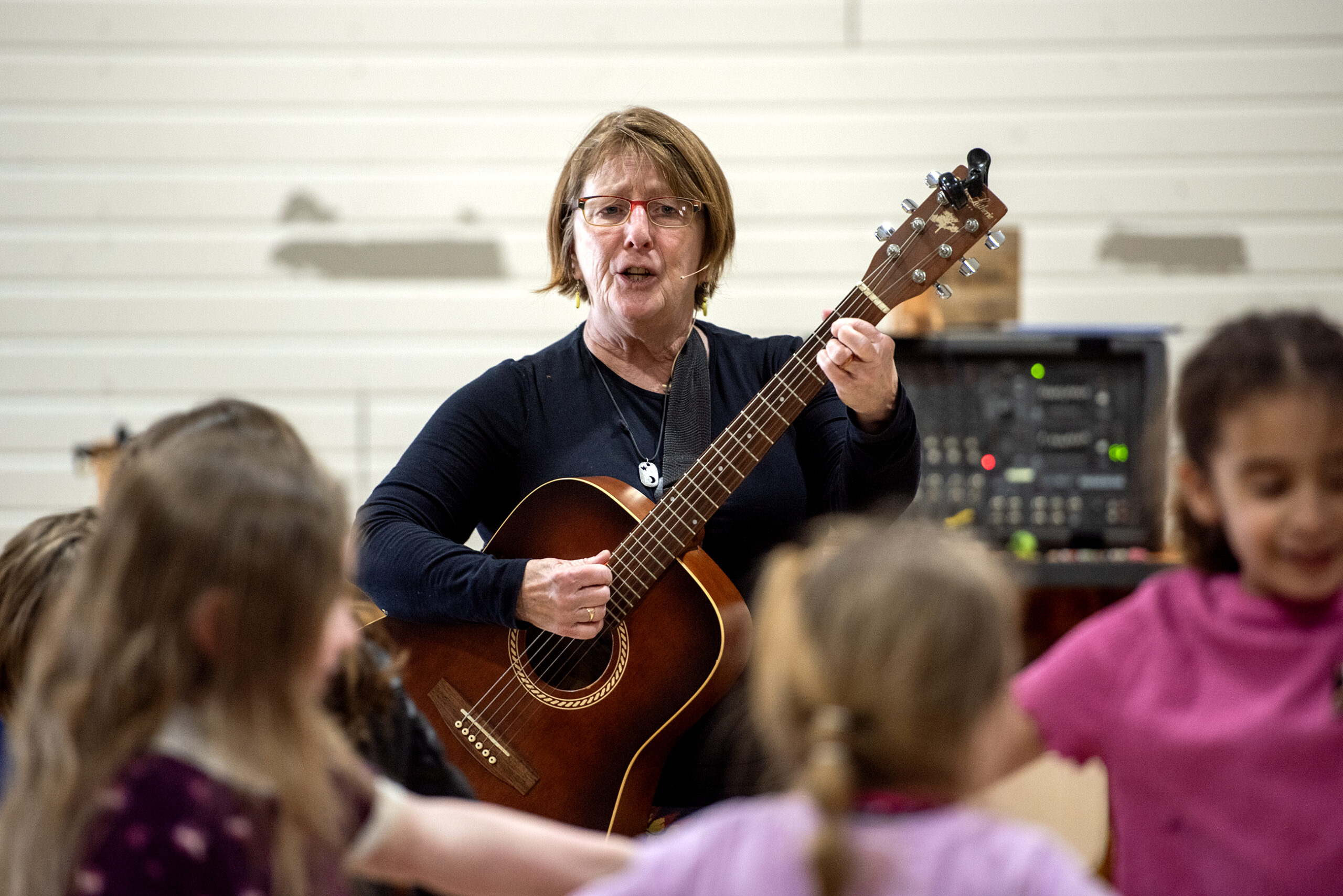
Hulsether is a recipient of the 2025 Folk and Traditional Arts Apprenticeship from the Wisconsin Arts Board. She is currently working with an apprentice to pass along the skills of being a dance caller.
“I used to say all the time to people: If you’re a bossy person, you should be a dance caller because you get to tell people what to do. Now, I try to think of it as leadership,” Hulsether said. “I am pretty opinionated in the rest of my life, but I’m also jovial. … What’s better than having a jovial person telling you what to do?”
“Wisconsin Today” recently followed Hulsether along for a day in the life of Dancing Sue.
Visiting an elementary school in La Crosse
Hulsether has been visiting Spence Elementary School in La Crosse for 15 years to teach kindergarteners through fifth graders a few basic folk dances with both music and gym teachers in attendance.
As the students settled on the gym floor, Hulsether’s first order of business was to give them an introduction to the tradition of folk dancing.
“It’s really important for me to help kids know that these are dances that have been passed on. They’re not new,” Hulsether said.
She added that a dance they learn together can be “very similar to a dance that George Washington would have done 250 years ago, and it’s still fun now.”
Drawing on her years as a music teacher, Hulsether had different ways of explaining the history for each grade. When teaching the kindergarteners, Hulsesther likened social dance to a joke — something you might hear once from a friend or family member and then pass on to the next person.
For the second-graders, they recited from a notecard: “A folk dance is passed on from person to person or from generation to generation.”
Before they get moving, Hulsether taught the students the basic etiquette for asking a partner to dance with them.
“We’re going to hold our hand out. We’re going to look them in the eye. We’re going to smile at them, and we’re going to say, ‘Will you be my dance partner?’” she said. “As often as we want to shy away from that because it makes [us] uncomfortable … I think it is a necessary element of being in a culture where we’re connected to each other.”
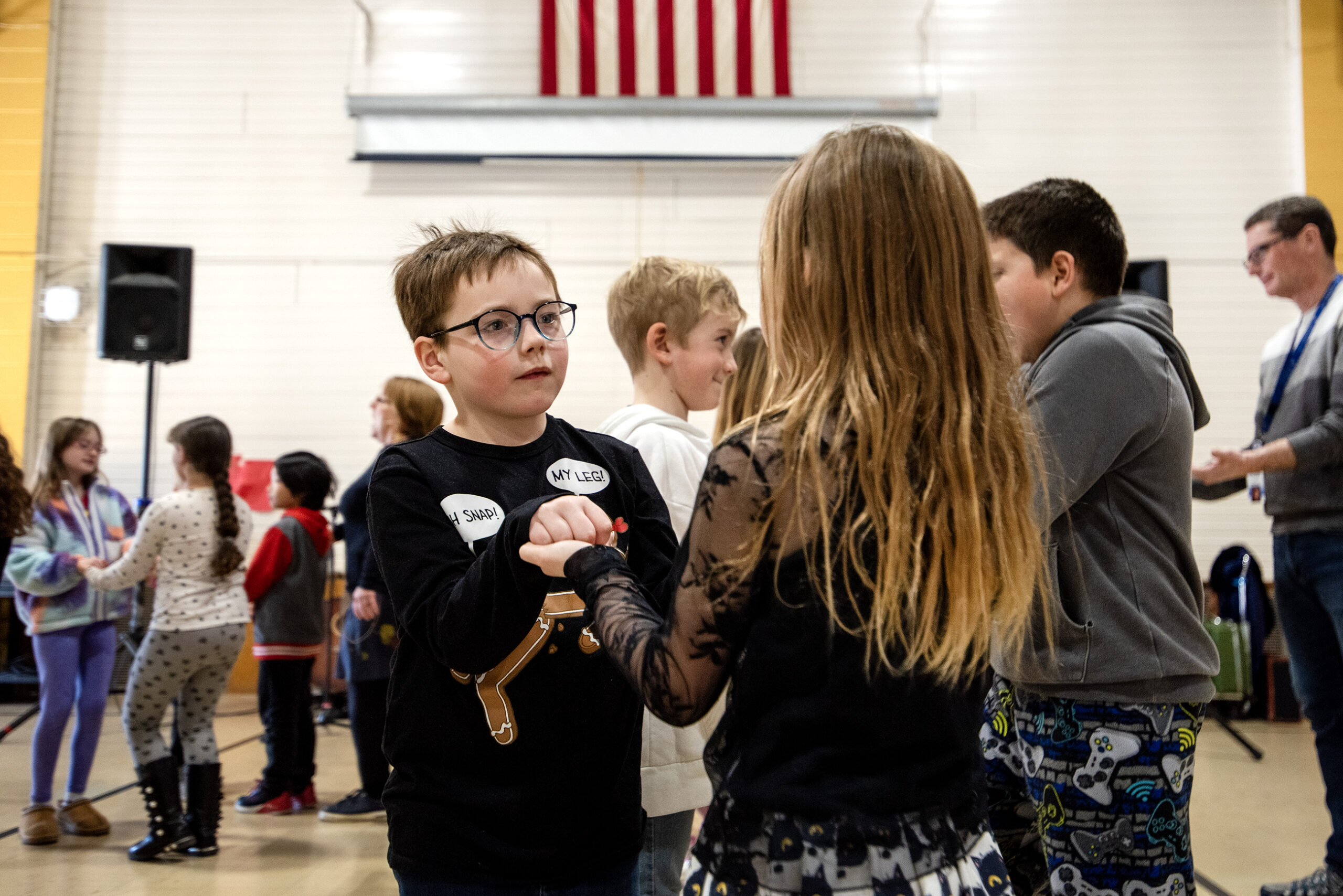
Then, it was up on their feet to start learning dances like “Family Road Trip” and “Birdie in the Cage” that Hulsether picked out for each grade.
“I have dances that I do for each age level that sort of can reel them in with their enthusiasm,” she said.
At the end of class, Hulsether put on a little performance with a limberjack, also known as a jig doll. It’s a traditional wooden toy that dances on a board that Hulsether bounces with her knee.
At Spence Elementary School, the students were enthralled with the limberjack. Hulsether thought that was because it is a different kind of toy than what they might be used to in an era of video games.
“I truly believe that’s why they love it so much: because it incites their imagination,” she said.
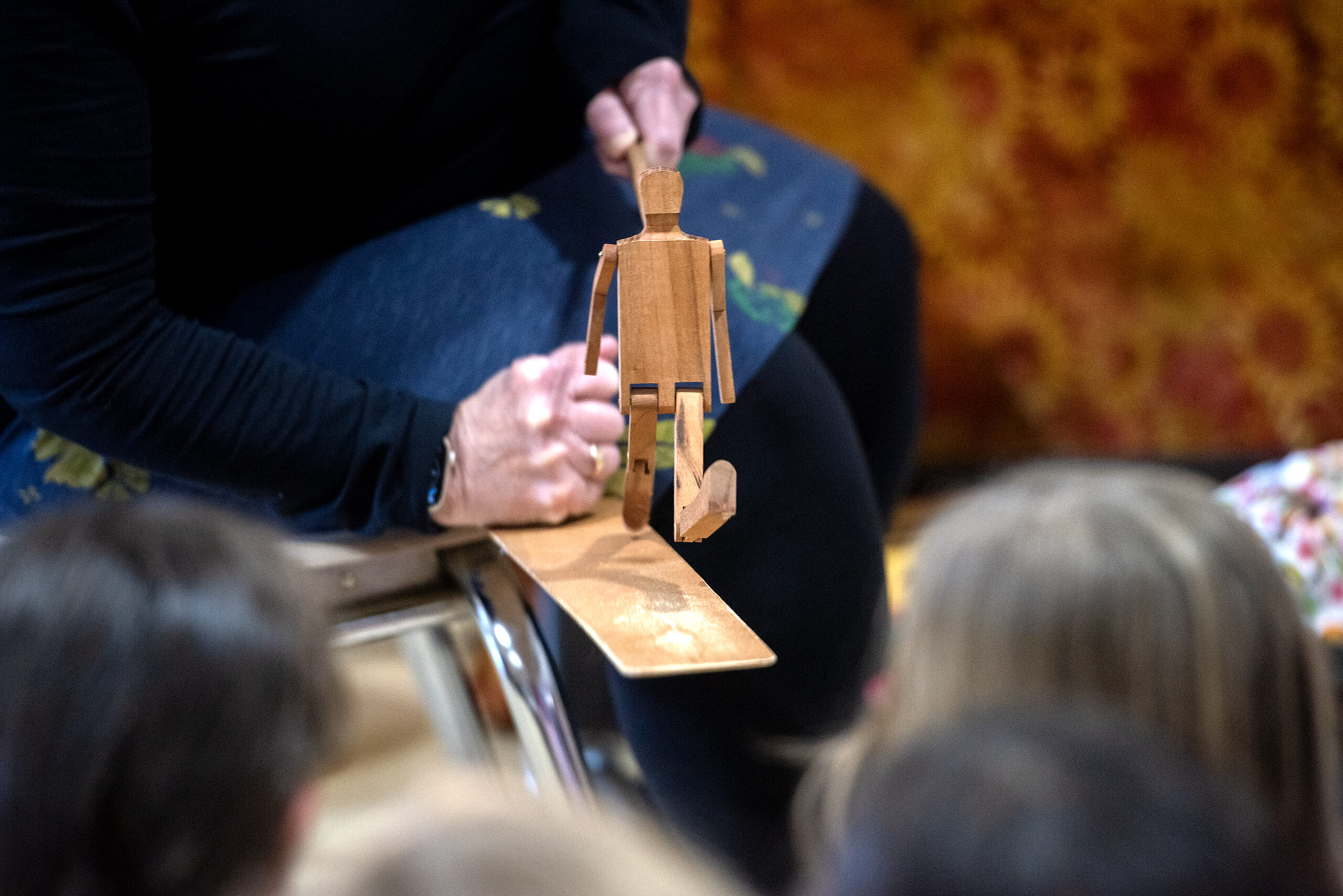
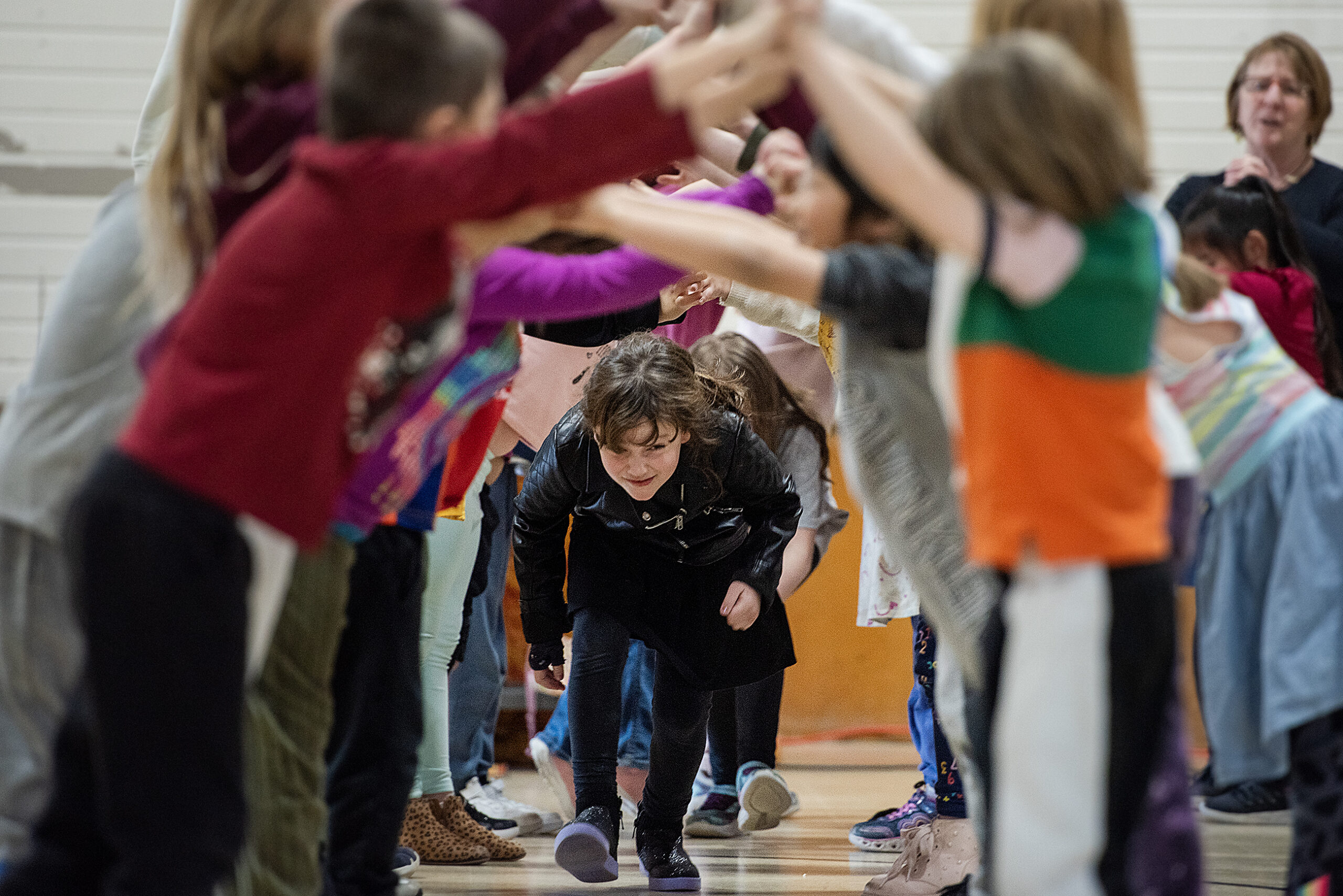
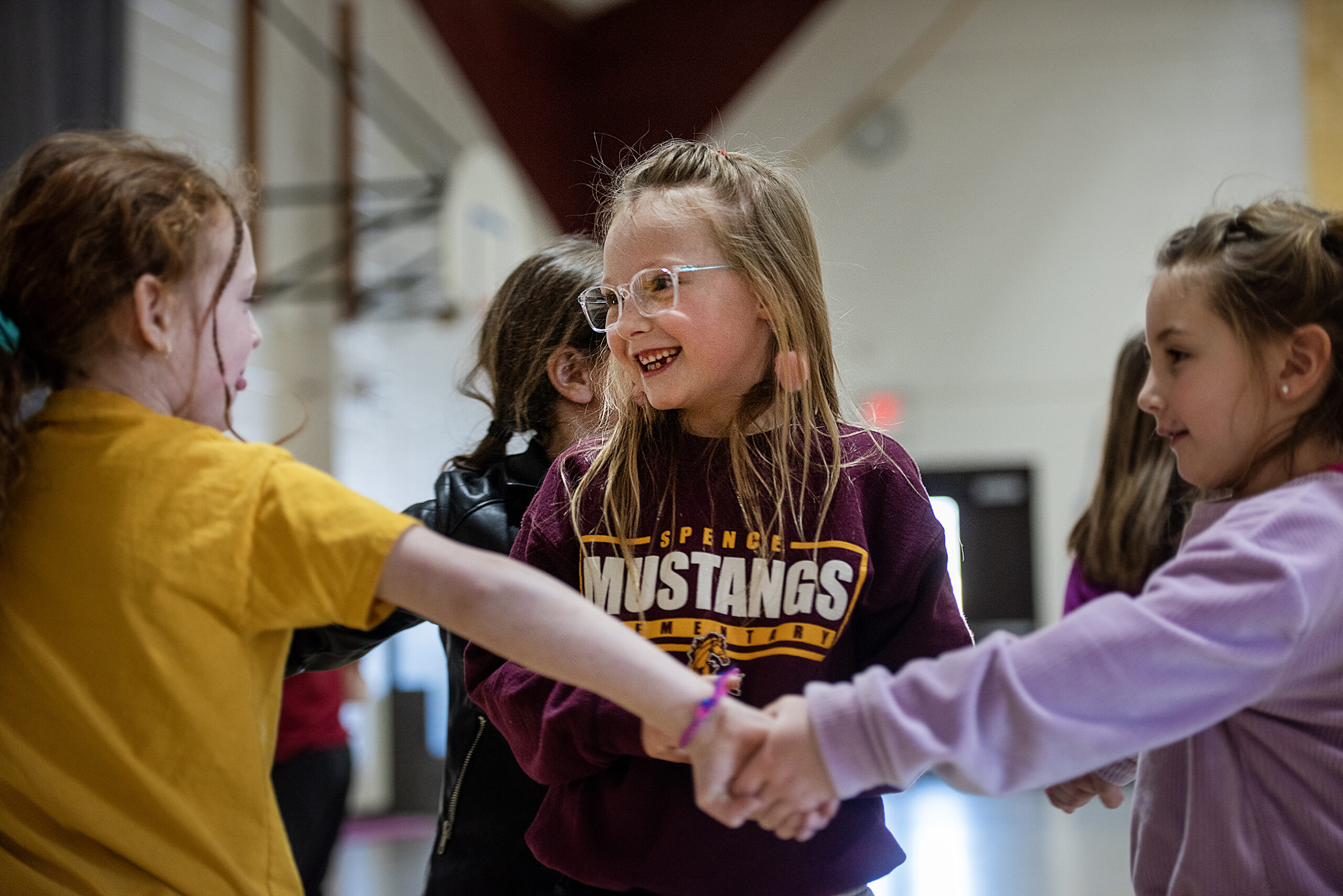
At the barn dance: ‘Pick up your feet, everybody!’
Later that evening after a full day at Spence, Hulsether led a “barn dance” at the Marbleseed Organic Farming Conference in downtown La Crosse with the Frog Slough String Band playing Appalachian tunes. The band said Hulsether is one of the best in the biz.
A shockwave ran through a big group of dancers holding hands as they shuffled across the carpet for the first dance. Hulsether checked in to make sure everyone was OK and weaved a new tip into her instructions: “Pick up your feet, everybody!”
The barn dance was mostly adults, with some teens and younger kids joining in. Hulsether taught more complex sequences than at the school but maintained her signature partner etiquette spiel.
“Everybody look at your partner and say, ‘You are my amazing partner,’” she said. “Doesn’t that feel good? It just feels good to say that to somebody.”
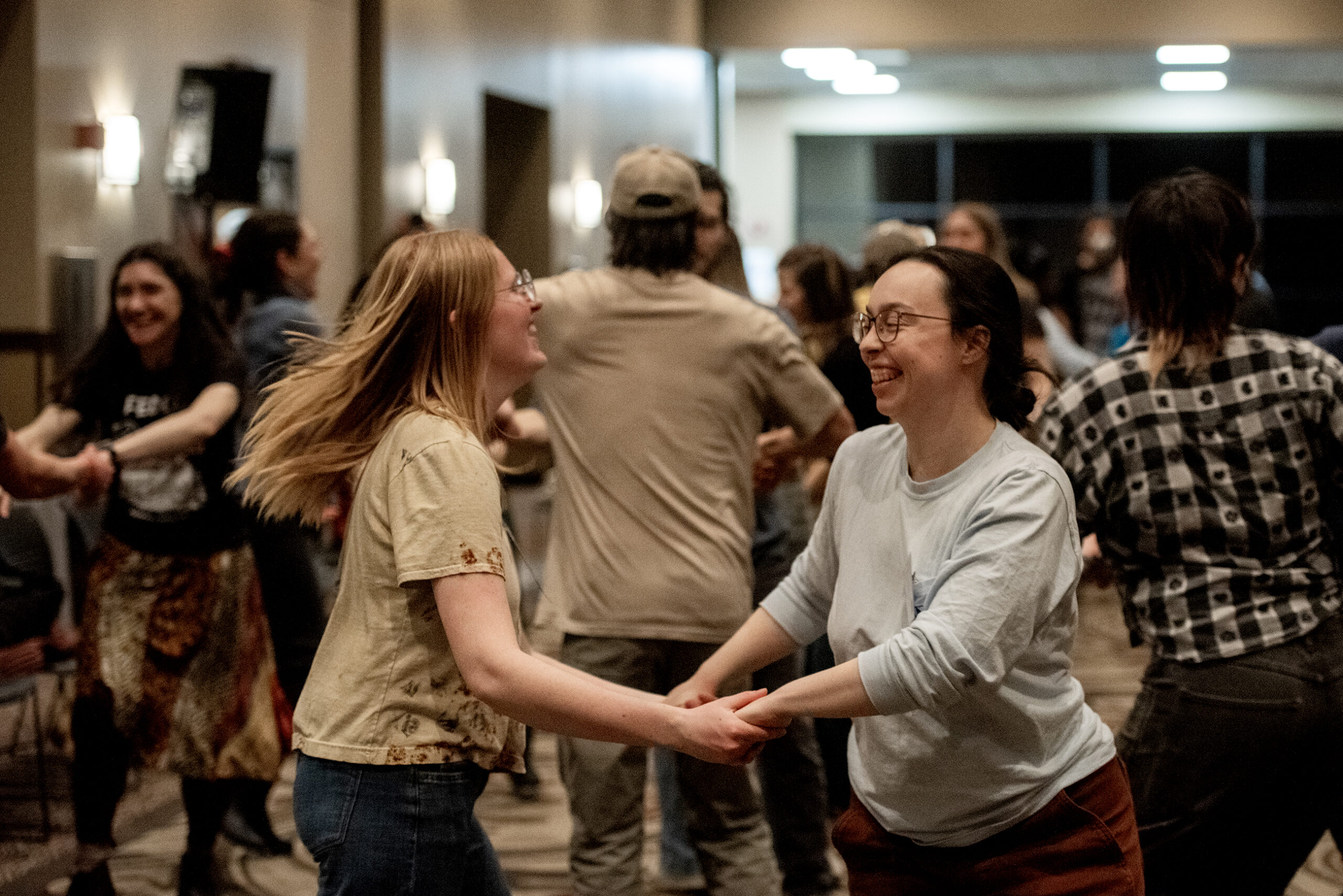
Passing the tradition on
Hulsether wrote a book, “Join Up Hands: Dances for School and Community Groups,” with instructions and teaching tips for 23 dances she has perfected over decades of calling.
The book also contains advice for making dancing as accessible and inclusive as possible, including gender-neutral terms for partners like “larks” and “robins” rather than the standard “ladies” and “gents.”
“There’s a real movement in contra and square dancing to call things based on the location of where the person is rather than what gender role they’re dancing,” she said.
For Hulsether, what makes folk dancing special is that anyone can participate and have a good time.
“My goal when I’m calling dances to a group of dancers, whatever age they are, is: Let’s connect with each other. Let’s connect with the music. Let’s enjoy being with other people,” she said.
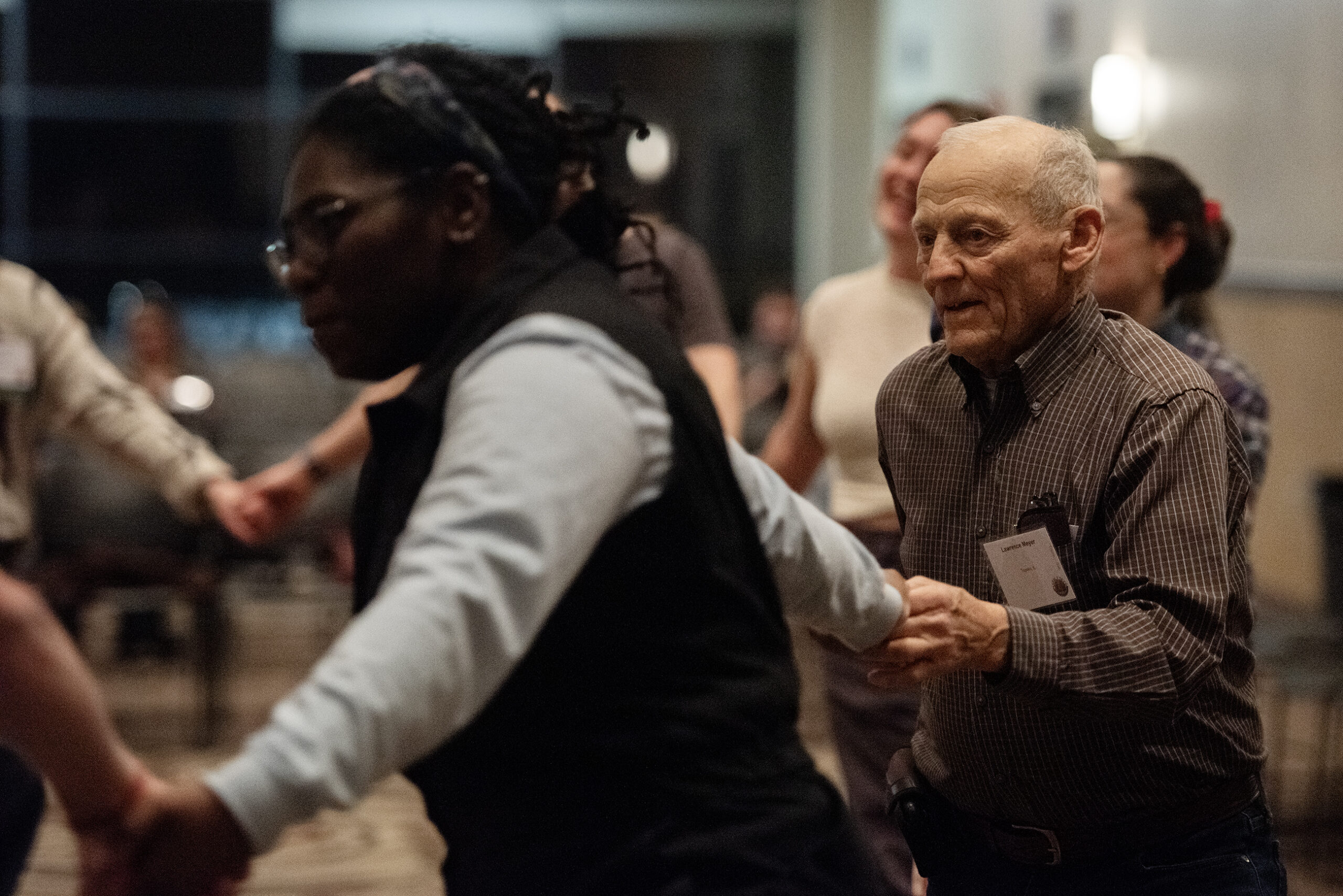
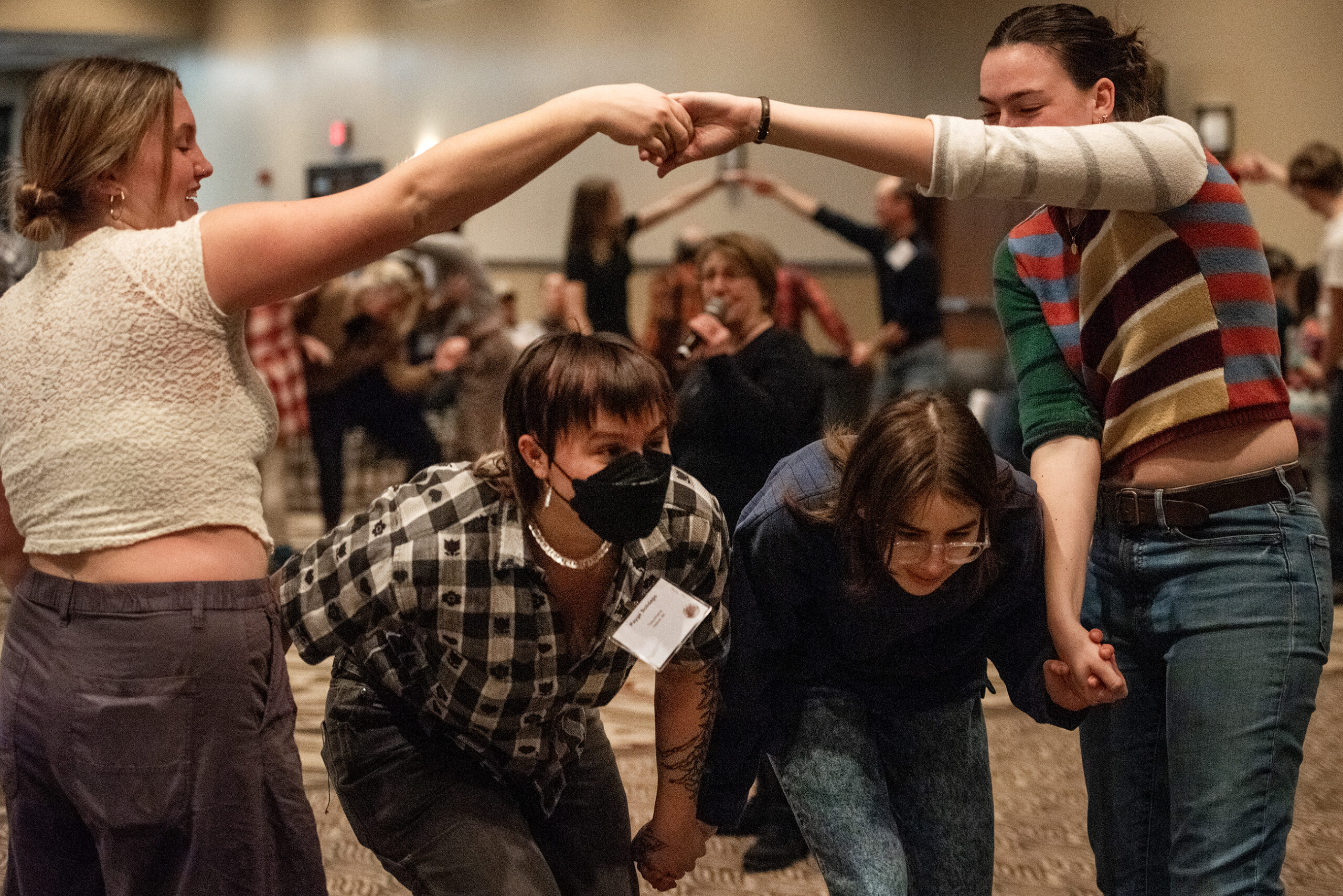
How to get involved with folk dances locally
Hulsether is a part of a monthly square dance held every second Saturday in Soldiers Grove. Nearby in La Farge, the Driftless Folk School puts on several barn dances throughout the year. The next one is coming up on April 26.
Here are other drop-in folk dances around the state:
- Milwaukee Contra Dance meets the second and fourth Fridays each month September through May.
- On the first Saturday of each month, Delafield Contra Dance hosts a dance at the Prairie Hill Waldorf School.
- Madison Contra Dance meets on Tuesday evenings and some Saturdays at the Wil-Mar Neighborhood Center. And Madison Folk Dance Unlimited hosts open dances on Thursdays at parks around the city.
- This year’s Squirrel Moon Contra Dance Weekend runs Sept. 19 to 21 at Folklore Village, which is near Dodgeville. Folklore Village’s monthly barn dance schedule is available here.
- Do-Si-Do is a pop-up group in Racine offering “a modern square dance experience.” The group’s 2025 event schedule will be posted to their Facebook page.
- The Door County Folk Alliance hosts regular barn dances. Learn more on their Facebook page.
- There is a new regular community folk dance in Stone Lake, near Hayward, the second Saturday of every month. More information available at the Annie & the Oakleys Facebook page.
- The Square Dance Association of Wisconsin oversees more than 30 square and round dance clubs around the state and hosts several jamborees throughout the year.

